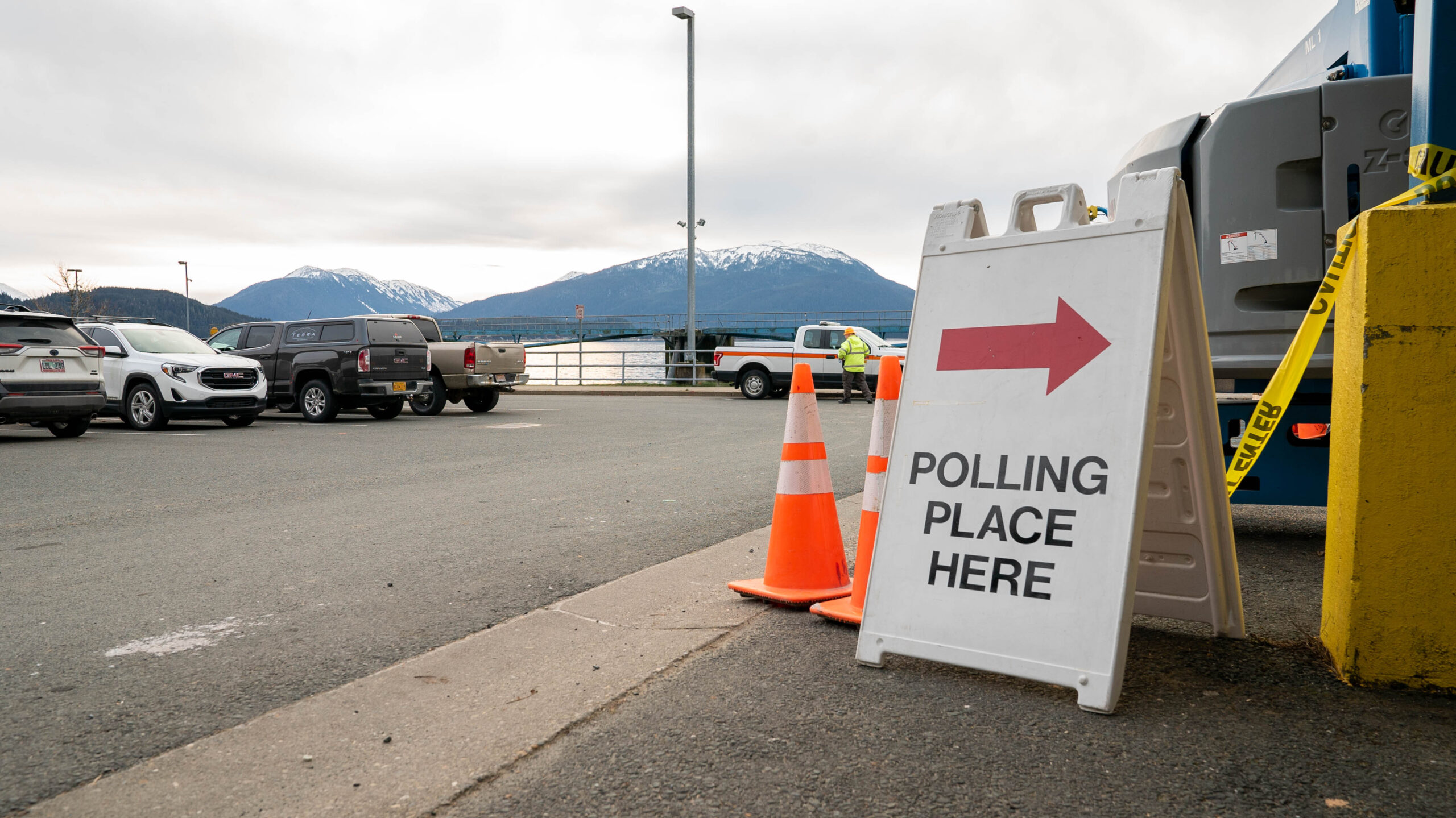
Election Day is today: Tuesday, Nov. 8.
It’s Alaska’s first general election under the state’s new ranked choice voting system. Already, thousands of Alaskans have cast their ballots. Polls close Tuesday at 8 p.m.
Here’s what to know about this year’s election.
What if I’m in line to vote and my polling place is closing on election night?
As long as you are in line before the poll officially closes at 8 p.m., state law says you can still vote. People who arrive after 8 p.m. are out of luck.
What am I voting on?
Voters are deciding on Alaska’s next governor, who will fill the state’s sole U.S. House seat and who will fill one of two U.S. Senate seats. Almost all seats in the Alaska Legislature are up for election. Voters will also decide whether to retain several judges and whether to hold a constitutional convention.
A sample ballot for your House district is available online.
If you’re still deciding between statewide candidates, check out our candidate comparison tool.
Do I need to rank all candidates?
You can choose to rank just one or multiple. An advantage of ranking more candidates is that if your first choice is eliminated, you still have a say in who wins.
Read more about ranked choice voting and practice how to do it here.
Where can I vote, and how do I find my polling place?
Polling places across the state are open from 7 a.m. to 8 p.m.
Your Alaska voter ID card should have your precinct’s name and polling place location marked on it. If you’re a registered voter and you go to your polling place, election workers should have your name on file among voters in the precinct.
But remember: Your polling place may be different than in the past due to recent redistricting. You can double-check your polling place at elections.alaska.gov.
Need a ride to the polls? Anchorage’s People Mover buses will be offering free rides on Election Day.
What do I need to bring to vote?
An Alaska voter ID will work, according to the Division of Elections, as will any of the following:
• Driver’s License
• State ID
• Other Photo ID
• Passport
• Hunting or Fishing License
• Other document with your name on it
The Division of Elections says if you don’t have one of those ID forms you can bring a current utility bill or paycheck, government check or bank statement or other government-issued document. The document must have your current home address on it.
What if I go to the wrong polling place?
Voters who go to the wrong polling place will likely be asked to vote questioned ballots. You may also be asked to vote a questioned ballot if your name is not on the precinct register, your home address has changed, you do not have an ID, you already voted according to the precinct register, or an observer challenges your qualifications to vote.
The elections division says all questioned ballots are returned to the election supervisor for review and counting by the Questioned Ballot Review Board.
What if I’m traveling on Election Day?
The Ted Stevens Anchorage International Airport will host a polling place on its first floor for all Alaska voters, from 7 a.m. to 8 p.m. Tuesday. The polling place is not behind TSA’s security checkpoint, which means voters can park in short-term airport parking, vote within 30 minutes and leave without having to pay parking fees.
I have to work on Election Day. Can I leave work to vote?
Alaska state law requires that employees receive time off to vote on Election Day, unless their shift begins at least two hours after polls open or ends at least two hours before they close.
I have an absentee ballot I haven’t mailed yet, will it still be accepted?
Absentee ballots will still be accepted by mail as long as they’re postmarked on or before Tuesday, Nov. 8. They can also be dropped off at early or absentee in-person voting locations or polling places until 8 p.m. Tuesday.
Also, while mailed absentee ballots are heavy enough to need two stamps, postal officials say they’ll still deliver ballots with one stamp.
Where can I find more information about the candidates?
Visit the Division of Elections website, check out our candidate comparison tool and take a look at our election news page.
When will we know the results?
We won’t know the final results for several weeks.
But we will know some results starting Tuesday night. According to the Division of Elections, the first results are likely to be announced around 9 p.m., an hour after polls close statewide. The count will include votes cast at polling places that day, plus early voting ballots from Oct. 24 through Nov. 3. The count will just include first-place votes, and it will be updated in the days following Election Day as more mailed ballots are received.
A candidate can win outright if he or she receives more than 50% of first-place vote.
If not, it goes to the ranked choice tabulation. The tabulation happens on Wednesday, Nov. 23. KTOO’s Gavel Alaska will provide livestreamed coverage from division headquarters in Juneau, starting at 4 p.m. (Read more about the rounds of tabulation here.)
The division aims to certify the election results on Nov. 29.
How do we know vote counts are accurate?
Election workers test the machines used to count votes at polling places before they’re used in the field. If one were somehow compromised, testing would likely reveal it before any real ballots were scanned.
After a ballot is scanned, it isn’t discarded. With few exceptions, state law requires a hand count of those physical ballots from one randomly selected precinct for every House district in the state where at least 5% of the ballots were cast. There’s 40 House districts.
Read more about election security here.
Why are schools closed in Anchorage on Election Day?
The Division of Elections requested that the Anchorage School District close schools on Tuesday, reports Alaska Beacon. The division said it will ensure that there’s enough space for voting and parking available.
Do you have an Election Day question that we missed? Email reporter Chris Klint at cklint@alaskapublic.org.
Chris Klint is a web producer and breaking news reporter at Alaska Public Media. Reach him at cklint@alaskapublic.org. Read more about Chris here.





